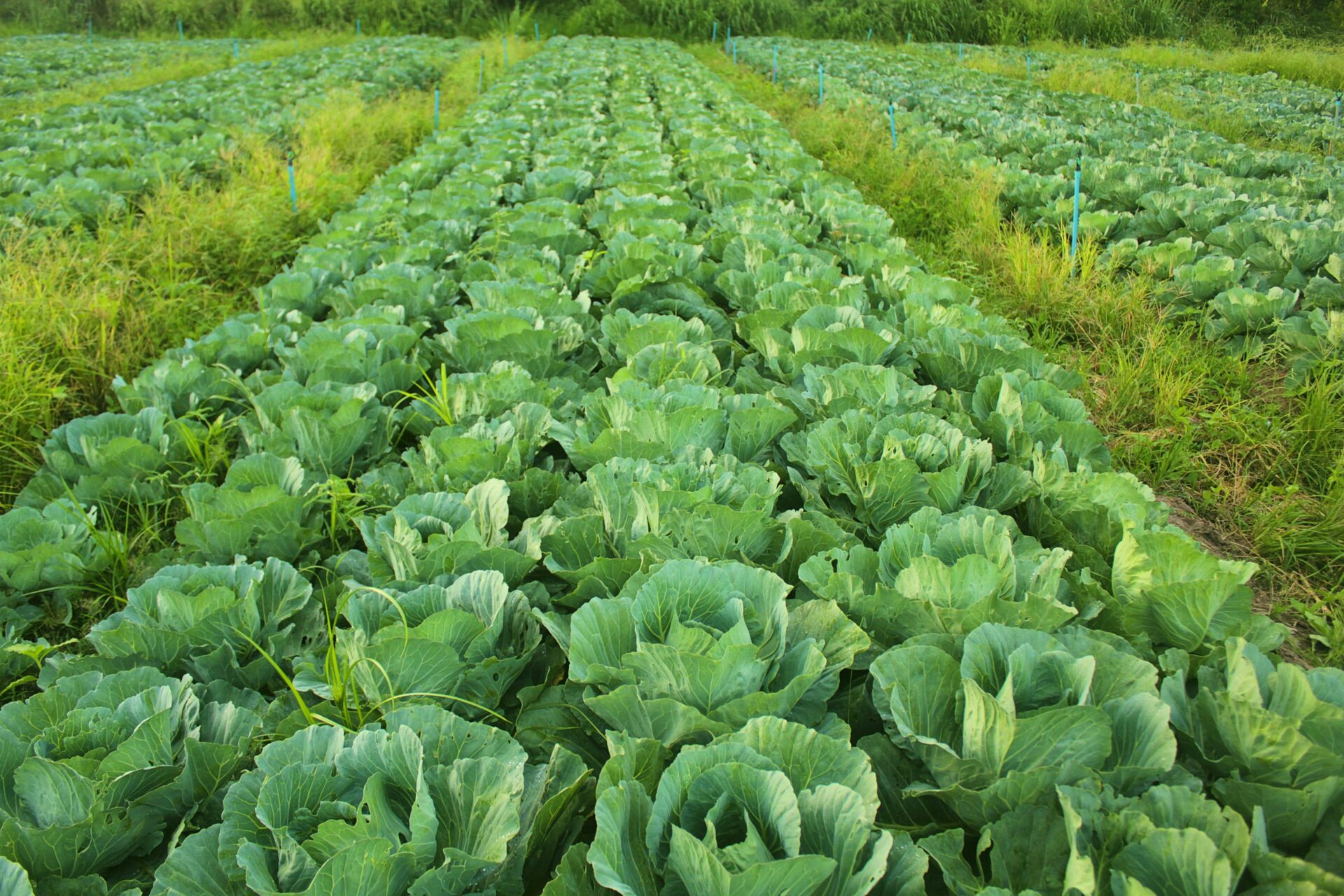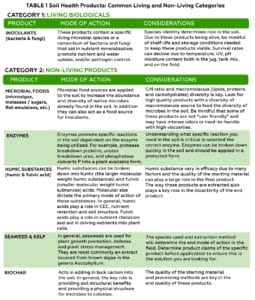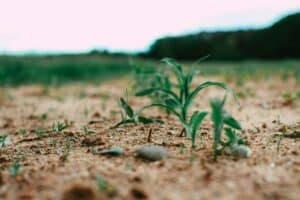Sep 11, 2025

If you’re a farmer, you’re a leader in innovation. You’re someone who regularly tests the boundaries, tries new things and takes chances. The willingness to step outside a comfort zone also helps experienced growers realize it’s easier to work with the land than against it.
One new frontier growers are currently exploring is tank mixing soil health products. Tank mixing is a common practice on many farms, and is the process of combining multiple crop protection chemicals, adjuvants, or fertility products into the same tank. Research suggests tank mix applications shouldn’t solely be used for your crops. It should also be used to improve soil health.
Using a product or a blend of products to improve soil health and increase crop yield is an emerging practice all growers should consider exploring.

Soil health is the interaction between organisms and their environment in a soil ecosystem. Soil health matters greatly to farmers as it is the foundation of productive, sustainable agriculture.
On the other hand, soil quality is how well soil does its job. Healthy and high-quality soils maximize water infiltration, improves nutrient cycling and benefits root structure (just to name a few).
Soil health products are inputs that provide soil health-like properties and come in two categories: living biologicals and non-living soil health products.
Living biologicals are bacteria or fungi that can be applied to the soil and over time improve soil health.
Non-living soil health products are enzymes, humic substances, microalgae, other microbial foods, macroalgae (like seaweeds and kelps), and biochars.
The main difference between these two types of products is one is a living organism, while the other is not. Each product or biological also behaves differently in the soil in each category, has its own mode-of-action and provides a different outcome.
By adding a soil health product, you can improve nutrient efficiency, plant performance, physiological status, resilience to environmental stressors and stimulate the microbiome.
Each of these products are often thought of as stand-alone applications or single additions to our ag chemical tank mix. Yet, given the boom of the soil health product industry (potentially increasing 10% in the next 8 years), many people are interested in evaluating the synergies or complementary effects of combining products.
From scientists to the private sector to growers, people are on the hunt for an environmentally friendly solution to improve crop performance and yield potential by leveraging soil health products. The research done so far suggests mixing different products together can give growers the benefit of multiple different modes of action to optimize results. This means that the right combination of products has been found to achieve better or higher results when compared to products acting alone.
This doesn’t mean you should make the all-inclusive fountain drinks you might have had as a kid, pouring a little bit of everything into your tank mixer like a plastic cup. The results would likely be as unappealing as the drink.
Just like mixing the wrong chemicals can create antagonisms and cause a disaster in your tank mix or in your field, the same goes for soil health blends. Whether you’re wasting money on products that don’t perform when mixed together, cleaning out your tank mixer due to an incompatibility reaction or paying to replace crops after spraying a bad mix – your soil health blend isn’t something you should take lightly.
What’s critical to a successful soil health product blend? Understanding each soil health product’s mode-of-action and how it interacts with other products.

Below is a list of products with their corresponding mode-of-action.

There are many reasons why some growers question soil health products before giving them a full and fair shot. Some common concerns include
“How do I know this will work for my field?”
“What if there’s too much variability?”
“What if I don’t pick the right product?”
To address these concerns, growers need to make sure they:
The potential benefits of a soil health tank mix far outweigh the risks.
There are many financial and environmental benefits to tank mixing soil health products.
For example, reduced passes across a field help prevent compaction. You’ll also be saving yourself money in diesel and labor costs. The increased efficiency of application helps you save time. Fewer field passes also decrease greenhouse gas emissions.
Once the mix is applied, it supports your crops in multiple ways, increasing crop productivity, yields and return on investment.
Think of your soil now as a starting point. The soil health products are the path forward, and healthy soil is your desired destination. To get the right products on your field, you have to know how your soil is doing currently. You also need to have a clear understanding of where you’re going, or what the desired outcome is.
Take stock of your field. What are some of the yield limiting factors? Some problems could look like:
Sometimes, you may find your field is suffering from more than one issue. Identify the main issues to start addressing the biggest yield impactors for your field. Then, select a product to treat the issues.
For example, the solution for nutrient leaching is you need nutrients to “hold” in the root zone rather than being washed away. Consider adding a product with humic and fulvic acid, which can stop nutrient leaching and instead, hold them for your plants.
Check out our list of common field scenarios that would benefit from a tank mix of soil health products.

Ready to load up your tank? Make sure you ask yourself these questions first.

Biological or chemical incompatibilities can occur with soil health products, just like pesticide tank mixes. Before you run off to purchase soil health products and dump them in your mixing tank, ask yourself the following questions.
This will influence handling, shelf-life and mixing protocols.
Living inoculants have storage restraints such as temperature. Freezing, thawing or direct sunlight can reduce the viability of these products.
Consider pH, chemicals, fungicides/insecticides and fertility you are adding.
This can potentially reduce the efficacy of the product in the field.
Again, this can potentially reduce the efficacy of the product in the field.
Hard water and high chlorine levels may reduce the efficiency of some soil health products.
Again, hard water and high chlorine levels may reduce the efficiency of some soil health products.
When building your mix, keep in mind mixing, shelf-life, viability, storage and handling may differ from input to input. Starting with these questions can help you build a soil health blend to maximize results.

The container provides helpful information to make the most of your soil health product. Common notes may include shelf-life constraints, recommended carrier volume, pH sensitivities, temperature and UV sensitivities. It may also tell you to agitate the product before use.
There’s nothing worse than dumping product down the drain. A soil health blend tank mix should yield impressive returns on investment, not be a sunk cost. Yet, if you mix in the wrong order, you may find yourself at a loss.
Hard water, mineral build up and pH can influence the performance of the tank mix.
Agitate between addition of products, ensuring each is mixed properly. This may take some time but will be well worth it in the end!
Using old products may yield lackluster results. Don’t let an expired product cloud your view on soil health products.
There’s no shame in double checking or asking for help.
Even if one jar test goes awry you’ll be incredibly thankful it was only in a small jar and not your entire tank.

The best soil health products for a farm in California might not be the same for a farm in Nebraska. There are many variables that impact which soil health product could be best for your field like:
… and more. Picking out the best product or product mix isn’t quite so simple, which is why we always encourage growers to work with a trusted advisor to build a tank mix with the best products to remedy their soil problems and meet their soil goals.
If you’ve never done one, or it’s been a few years, you may want to consider doing a soil test to understand your soil’s health.
It is worthwhile to mention 75% of soil microbes in farm soil are either dormant or asleep. These microscopic organisms may be invisible to the naked eye, but they play an integral role in your soil health and your crop’s yield potential. To wake them up, feed them with microbial food like PhycoTerra.
Once fed, beneficial microbes go to work for your crops by:
Don’t just take our word for it. Explore our trial dashboard, organized by crop. There, you can see the results our products have had on real farms, including crops from corn to potatoes.
The best soil health products are the ones that help you fix your yield limiting problems and help your soil (and crops) reach their full potential.
If farmers want to increase their chances of success in the future, they have to do what all farmers have done for generations: test, experiment and explore. Once something works, it becomes a part of the farm’s legacy. Yet, there’s always room for improvement and plenty of opportunities to do it.
This year, consider investing in your soil by developing a deeper understanding of the mode of action and primary function of soil health products. By pinpointing the soil health problems in your fields, you can create a mix based on mode of action, environmental needs and ensure success by adopting the principle of blending soil health products.
The future of unlocking higher yields, more effective nutrient use and improved crop quality is already in your soil. You just have to invest in it.
Want to talk to an expert about feeding beneficial microbes in your microbiome? Fill out a contact form to get started!